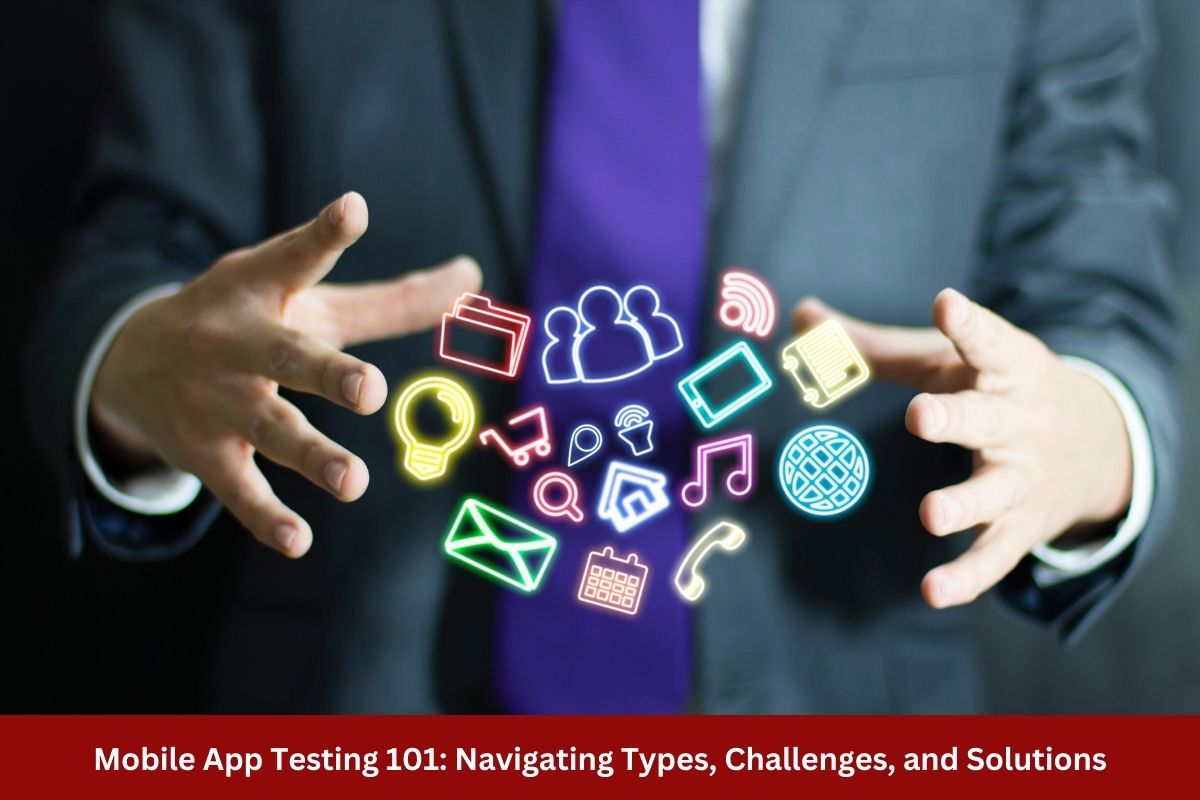As mobile devices and apps are indispensable in our regular lives, the importance of mobile app testing for QA professionals has never been greater.
Mobile application testing evaluates a mobile application’s functionality, usability, and performance. It is a necessary procedure in the SDLC or software development life cycle and is essential for ensuring the quality and reliability of the final product.
Mobile app testing can be complex and challenging with the growing number of different mobile operating systems and devices. Still, it is crucial for identifying and fixing bugs and other issues before an app is released to the public. By thoroughly testing an app, QA professionals can ensure that it meets the needs and expectations of users and is free from defects.
Types of Mobile App Testing
1. Functional testing: Tests the app’s basic functionality to ensure it works as expected.
2. Performance testing: Measures the app’s performance and responsiveness under different loads and conditions.
3. Security testing: Identifies the app’s vulnerabilities and potential security risks.
4. Usability testing: Evaluates the app’s ease of use and user experience.
5. Compatibility testing: Tests the app’s compatibility with different devices, operating systems, and screen sizes.
6. Exploratory testing involves testing the app by trying different scenarios without a specific test plan.
7. Automated testing: Uses specialized software to execute tests automatically and check for errors.
Challenges in Mobile App Testing
1. Managing device fragmentation
Mobile app testing tools can be a complex and challenging process due to the diverse range of devices, operating systems, and screen sizes on the market. One of the biggest challenges is managing device fragmentation, which refers to various devices and configurations an app may need testing.
This can include different models, manufacturers, and versions of operating systems. Ensuring that an app functions correctly on all these devices can be a significant undertaking and requires many test devices and a thorough testing strategy.
2. Testing in real-world conditions
Another challenge is testing in real-world conditions, which can be difficult to replicate in a lab setting. This includes testing how the app behaves under network conditions, such as poor signal strength or high latency, and how it handles other user interactions and scenarios. This testing requires significant planning and resources and can be challenging to automate.
3. Keeping up with fast-paced development cycles
Maintaining fast-paced development cycles is another major challenge in mobile app testing. With the rapid pace of development, it can be challenging to ensure that testing is completed in time for the app to be released. This can lead to delays or even the release of an app that needs to be thoroughly tested.
4. Ensuring compliance with app store guidelines
Ensuring compliance with app store guidelines is also challenging for mobile app developers. Each app store has guidelines and standards for what is allowed and what is not. This can include guidelines on app functionality, user interface, and security. Please comply with these guidelines to avoid app rejection from the app store, which can be a significant setback for development teams.
5. Managing test data
Finally, managing test data is a challenge that mobile app testers face. This includes preparing and maintaining the data that will be used to test the app and ensuring that the data is accurate and relevant. This can be tedious, especially when dealing with large amounts of data, and requires a well-organized testing strategy.
Best Practices for Mobile App Testing
1. Develop a comprehensive test plan
First, developing a comprehensive test plan that outlines the testing process’s objectives, scope, and approach is essential. This will help ensure that all aspects of the app are tested and that the testing process is well-organized.
2. Embrace automation
Next, embracing mobile automation testing can be a huge time saver and help improve the testing process’s efficiency. Automated tests can be run quickly and easily repeatedly so developers can identify and fix bugs faster.
3. Utilize real devices for testing
Using real devices for testing is also crucial. Emulators can be helpful, but they are only sometimes accurate and may not catch all issues appearing on real devices. Investing in a range of real devices ensures that the app is tested on various platforms, which helps identify and fix potential issues.
4. Invest in test management tools
Investing in test management tools can also be beneficial. These tools help organize, automate, and track the testing process, which helps to improve efficiency and accuracy.
5. Continuously monitor and improve app performance
Continuously monitoring and improving app performance is also essential. This includes testing the app’s performance and responsiveness under different loads and conditions and tracking the app’s usage data to identify potential issues.
6. Collaborate with developers and other stakeholders
Finally, collaborating with developers and other stakeholders is essential to mobile app testing. This includes working closely with the development team to identify and fix issues and communicating with other stakeholders, such as product managers and designers, to ensure that the app meets their needs.
Final words
The latest trends and technologies in mobile app testing are crucial for ensuring the quality and performance of your app. Keeping up with the latest tools, frameworks, and best practices can help you quickly and efficiently identify and fix bugs and other issues.
Additionally, staying current with trends in mobile app usage and user expectations can help you create a better user experience and increase engagement.
Key takeaways include staying current with the latest Automated Software Testing platform and tools, frameworks, and best practices, being aware of mobile app usage trends and user expectations, and regularly monitoring and updating your app to ensure optimal performance.
